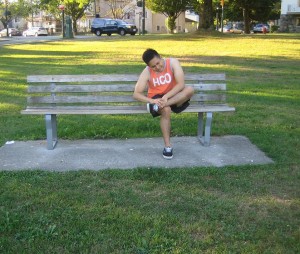Poison sumac is capable of triggering rashes if an individual is allergic or highly sensitive to the plant. The plant releases urushiol which is the oil present on the leaves, stem, fruits and even roots once damaged. Some individuals do not react in any way if exposed to the oil but most are highly sensitive to it. A severely itchy rash can manifest within 24-72 hours. If the poison sumac rash is not treated, it typically subsides within several weeks. A doctor should be consulted if the rash spreads to the eyes, mouth or genitals since further treatment might be needed.
Just like with poison ivy and poison oak, it is vital to be prepared when spending time outdoors while camping or hiking. Being able to recognize these plants is a must so that they can be avoided. In addition, wear clothes that can provide the best protection such as long pants and shirts with long-sleeves.
Washing

You have to wash the whole body using water and soap within 10-15 minutes of exposure to the poison sumac plant in order to prevent a rash by eliminating the urushiol from the body. Clothing, shoes, tools and any object that came into contact with the plant must be cleansed with water and alcohol in order to prevent contact with the skin.
If the urushiol was left on objects, urushiol is still capable of triggering allergic reactions years later.
Soothing
In case the rash and blisters due to poison sumac exposure develops, the individual should avoid scratching the affected area since microorganisms can easily enter the broken skin and cause an infection. If possible, the individual should avoid scratching the area, especially if he/she has long fingernails.
Soothe the itchiness and minimize the swelling by applying a cool compress to the skin or soak in a cool bath several times in a day. Baking soda or oatmeal can be added to the bath water. Burrow’s solution or aluminum acetate solution can be applied over the blistered areas 2-3 times a day for about 20 minutes. When preparing the treatment, use 1-2 over-the-counter Dome-Boro tablets that are mixed in a pint of water. Immerse a towel or cloth in the solution and applied over the affected areas.
Medications
There are over-the-counter medications that can help minimize the itchiness and swelling. Calamine lotion or corticosteroid creams can be applied on the skin.
Diphenhydramine is an antihistamine that can be given by mouth in order to relieve the itchiness as well as help the individual sleep. Zinc oxide can also protect the skin and dry out the blisters. As for prescription medications including antibiotics for infection and corticosteroids for generalized rashes might be required if the home remedies are not effective.
